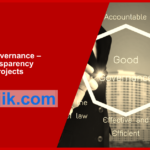In the dynamic landscape of modern business, effective project management goes beyond meeting deadlines and staying within budget. True success is achieved when projects align seamlessly with the overarching strategy of the organization.
Strategic alignment ensures that every project contributes to the long-term goals, maximizing the value of each endeavor. In this guide, we will explore key steps to guarantee your projects are in sync with your organization’s strategy.
1. Understand the Organizational Strategy
Before diving into project planning, it’s essential to have a comprehensive understanding of the organization’s strategy. This involves a deep exploration of the mission, vision, and overall objectives.
Leaders must be well-versed in the strategic priorities, market positioning, and the competitive landscape. This foundational knowledge will serve as the compass guiding project decisions.
2. Develop a Project Charter
A project charter is a crucial document that outlines the project’s purpose, objectives, stakeholders, and scope. When creating a project charter, align each element with the broader organizational strategy. Clearly articulate how the project contributes to the overall goals and objectives. This not only provides a roadmap for the project team but also serves as a constant reminder of the strategic alignment throughout the project’s lifecycle.
3. Establish Key Performance Indicators (KPIs)
To measure a project’s success, establish KPIs that are directly tied to the organizational strategy. These metrics should be specific, measurable, achievable, relevant, and time-bound (SMART). It is important to understand how the delivery of the project will influence the KPI in a positive way.
Regularly track and evaluate these KPIs to ensure the project stays on course and aligns with the desired strategic outcomes.
4. Foster a Collaborative Culture
Successful project alignment requires a culture of collaboration. Break down silos and encourage open communication across departments. This ensures that project teams have a holistic understanding of how their work fits into the larger organizational picture. Foster an environment where ideas can be freely shared, enabling teams to identify opportunities for synergy between projects and organizational strategy.
5. Conduct a Risk Assessment
Anticipate potential risks that could derail the project’s alignment with organizational goals. A thorough risk assessment should be conducted at the project’s initiation and revisited periodically throughout its lifecycle. Identify risks related to strategic shifts, market changes, and internal challenges. Develop contingency plans to mitigate these risks and maintain alignment despite unforeseen obstacles.
6. Adaptability and Flexibility
The business landscape is ever-evolving. To ensure ongoing alignment, projects must be adaptable and flexible. Build agility into project management processes to accommodate changes in strategy or market conditions. Regularly reassess the alignment of ongoing projects with the organization’s strategy and make adjustments as needed.
7. Align Stakeholder Expectations
Stakeholder alignment is critical for project success. Engage stakeholders early in the project lifecycle to understand their expectations and concerns. Regularly communicate progress and address any deviations from the initial alignment. By keeping stakeholders informed and involved, you not only build trust but also ensure that their perspectives are considered in decision-making processes.
8. Leverage Technology for Alignment
Utilize project management tools and technology to enhance alignment. Integrated systems can provide real-time visibility into project progress, making it easier to identify and address misalignments promptly. Automation can streamline workflows, reducing the risk of manual errors and ensuring that projects stay on track with organizational strategy.
9. Encourage a Learning Culture
Encourage a culture of continuous improvement and learning within the organization. Evaluate project outcomes and use lessons learned to refine future projects. This iterative approach ensures that each project contributes not only to the current strategy but also informs and enhances future strategic initiatives.
10. Celebrate Achievements and Learn from Setbacks
Acknowledge and celebrate project successes that directly contribute to organizational strategy. Likewise, setbacks should be viewed as learning opportunities. Conduct post-project reviews to analyze what worked well and what could be improved. This reflective process feeds into the organization’s overall learning culture, creating a cycle of improvement that reinforces strategic alignment.
Conclusion
In conclusion, the alignment of projects with organizational strategy is not a one-time effort but an ongoing, dynamic process. It requires a combination of strategic foresight, effective communication, and a commitment to continuous improvement.
By following these key steps, organizations can ensure that every project becomes a stepping stone toward achieving long-term strategic objectives. With strategic alignment at the forefront of project management, businesses can navigate the complexities of the modern landscape and position themselves for sustained success.






